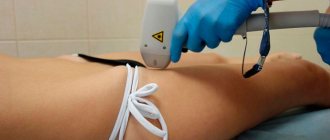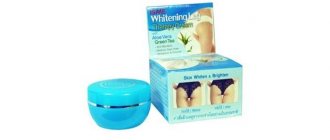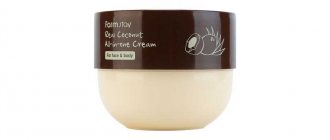Pigment spots on intimate places or an excessively dark color of the perineum are not only a reason for embarrassment and awkwardness during intimacy. For dancers, actors, athletes and models, perineal pigmentation can be a career killer.
We have equipped the clinic with a modern generation of lasers, which in one session allow you to lighten the intimate area and forget about pigmentation-related problems forever.
Light peeling and redness of the skin disappears on the second day after the procedure.
What should the normal color of the intimate area be?
Let us clarify right away - usually the normal color of healthy skin in the intimate areas of men and women is still darker than the color of the entire body. The area around the anus, the perineal area, and the vulva area are most often naturally more pigmented.
But skin bleaching in intimate places and bleaching the anus is not always just a fashion caused by our desire to correspond to a certain aesthetic ideal.
It often happens that for many reasons (more on this below), the intimate area becomes a pronounced brown color, which is obvious even through underwear. At times, the dark color does not appear evenly, but in spots. In this case, undoubtedly, getting rid of pigmentation will be the most reasonable decision, which will allow you to return to a full intimate life, to your favorite underwear and to your favorite sport without shame and fear.
How it works?
The cosmetologist first cleans, disinfects and degreases the treatment area. peeling is applied to it . Lactic, glycolic and citric acids contained in its composition destroy the resulting pigment. It breaks down and is naturally eliminated from the epidermal cells. Next, soothing whitening cream the skin .
Peeling is a remedy that also promotes cell regeneration. This means that the skin on the treated area will become more elastic, tightened and will not stand out against the background color of the whole body.
During bleaching of the labia , armpits or anus, burning or tingling sensations may occur. This shouldn't scare you. Such sensations mean that the peeling has begun its work.
IMPORTANT! The procedure is completely safe for both general and reproductive health. The products used affect only the pigment, without affecting or damaging the deeper layers of the skin.
What causes pigmentation in the intimate area?
Why does the skin in intimate areas change color? The causes of pigmentation can be different. Here is a short list of what determines the color of the crotch.
- You wear uncomfortable tight underwear, especially synthetic ones, because of which your delicate skin is constantly exposed to mechanical irritation. In response to it, pigment cells present in the skin - melanocytes - make the perineal area darker.
- Increased sweating in the intimate area is usually a problem for overweight people.
- Skin irritation due to improper depilation, use of incorrectly selected cosmetics and hygiene products.
- In addition to the listed “external” reasons, skin pigmentation in intimate areas can be caused by “internal” reasons - infectious diseases, fungus, endocrine problems, diseases of internal organs, taking hormonal drugs and antibiotics.
- Among other things, the perineal area may become darker during pregnancy and after childbirth, as well as with age.
- Hyperpigmentation may simply be a congenital feature.
We strongly do not recommend lightening your intimate areas at home.
The Internet is replete with recipes that supposedly came to us from time immemorial. Lemon, cucumber, bearberry, parsley, licorice - the whole garden is at your service. Sometimes they offer radical measures such as bleaching the skin of the perineum with hydrogen peroxide.
If you really want to try to lighten the anus, correct the color of the vulva and labia using folk methods, do not forget that the perineal area is called the “delicate zone” for a reason. It is riddled with nerve endings and blood vessels. Therefore, any home skin lightening in intimate places can provoke a pronounced pain reaction and swelling, against the background of which pigmentation will seem like the most insignificant of the problems. Essential oils in parsley can cause an allergic reaction, and peroxide can simply burn the mucous membrane.
Skin whitening between legs
Skin whitening of intimate areas of the body: the vulva, labia and adjacent areas is of increasing interest among women aged 18 years and older. The reason is simple - many women are embarrassed by the color of their vulva and anus, and feel uncomfortable when someone sees their perineum, be it a cosmetologist, a gynecologist, or even a bed partner.
As a rule, the younger a woman is, the lighter and pinker her lips are. With the onset of sexual activity, the external genitalia darken. Moreover, according to some observations, the color of the labia minora in brunettes is often dark brown, while in blondes they are usually light or pink. The reason is quite understandable - they have different skin pigmentation. Further on the link you can find out in more detail why it can be dark between girls’ legs. The procedure for whitening the skin of intimate places in the salon is precisely designed to make the deep bikini area lighter.
Anal whitening
Are you brave enough to try anal bleaching? The bizarre trend comes after some Western female celebrities admitted to bleaching their anal area. The procedure involves lightening the color of the skin around the anus with special cosmetics (NOT laser!). This is done purely for aesthetic reasons, so that the skin around the anus is the same color as on the buttocks. Anal bleaching does not mean that a woman wants exactly “that” sex or is obsessed with it. It's just about confidence in every centimeter of your body.
The dangers of laser anal bleaching
Be careful - if laser bleaching of the anus and labia is performed unsanitarily or by an insufficiently trained person, it can cause cold sores, scarring and infection. It can also lead to strictures, which narrow the anus and make it difficult to have a bowel movement, or lead to tears in the anal canal when intercourse enters the rectum.
Bikini whitening
From a medical point of view, “bikini area whitening” is a cosmetic procedure that lightens the skin of the perineum, labia majora (outer) labia, clitoris, and around the anus. This medical service is performed for aesthetic purposes to lighten the skin color of the area, conventionally called the “deep bikini”). Bikini skin lightening in salons is often done with laser machines: we do not use this technology due to the increased risk of side effects (see link at the bottom of the page).
Whitening labia
It is completely normal and natural for the areas around the vagina to become darker, but it may not be aesthetically attractive. These spots can be successfully lightened by a combination of professional labia bleaching treatments at a salon and following at-home aftercare recommendations. If you have a history of diabetes, lupus, psoriasis, herpes, or unremoved genital warts, you cannot undergo whitening at this time. According to doctors, the intimate area should be completely healthy in appearance before starting treatment for darkening. Keep in mind that perineal hyperpigmentation is one of the most challenging skin conditions, so packages of a minimum of three to four treatments are recommended.
Why do I want to bleach my intimate area?
The dark color of sensitive areas can evoke conflicting emotions in girls. Many people do not pay attention, for example, to a darkened anus, since it is not outwardly noticeable in everyday life and is not accompanied by any unpleasant sensations. Others consider it ugly and are embarrassed to expose themselves in front of their boyfriend, when epilating a deep bikini in a beauty salon in front of a cosmetologist, or even in front of a gynecologist. After all, the discrepancy between the dark color of the skin of the intimate area and the light skin of the buttocks and thighs in contrast forms the visually perceived effect of an unattractive, “dirty” perineum. In addition, there are situations when in showers, locker rooms of fitness clubs and other places, everything unusual can become the subject of increased attention and discussion among friends or just others. For example, the anal area or labia minora of a girl of a dark, almost black color, accidentally revealed to the eye, will with almost 100% probability, voluntarily or involuntarily, attract curious glances.
Thus, dark genitals are not a medical indication for intimate bleaching or special treatment. However, this situation may contradict women's aesthetic ideas. Therefore, they resort to bleaching (whitening) in a salon or clinic. Usually, girls undergo intimate skin bleaching procedures for a deep bikini completely, although sometimes there are wishes to bleach only the anus and the skin around it, or limit it to the area of the labia majora.
By the way, this procedure is very popular, especially among young girls, and is associated with the lightening of the labia. But you should keep in mind that only the outer (large) lips can be bleached. If the labia minora (inner) have blackened, wrinkled edges, then intimate whitening of them in a salon or at home is pointless. The problem can only be solved radically, but for good - labiaplasty surgery!
How to lighten skin in intimate areas without risking health
In order to quickly remove pigmentation and change the color of the anus and vulva, we at Platinental use safe laser lightening of intimate areas.
Laser lightening of the anus and intimate area - bleeding - is a non-traumatic procedure that does not in any way interfere with the usual course of life.
Expert comment:
“The attachment used for laser whitening of the perineum is the same as the one used on the face. The laser is switched to the “whitening” mode and the entire pigmented area is sequentially processed. It will take no more than 15 minutes to lighten the entire perineum.
All processing is done only manually under local anesthesia: we use Emla cream for pain relief.”
Vladislava Gladysheva, plastic surgeon, specialist in aesthetic gynecology.
How is bikini area whitening done in salons?
In order to whiten the bikini area in the salon, there are the following procedures:
- Grinding. This is a peeling that helps remove dead dark skin cells, while brightening it. This is quite painful to do, so women should prepare for a sensation similar to sandpaper rubbing against the skin.
- Phototherapy. The procedure is carried out using flashes and various impulses. The effect of light on the skin provokes the onset of biochemical processes in it that promote lightening. Women do not experience pain or discomfort. The only drawback of the procedure is the high cost.
- Laser whitening. This method is in demand among famous personalities and stars. To avoid pain during the procedure, an anesthetic cream is first applied to the intimate area. Then, the skin is polished using a laser. After laser whitening, there is some redness in the skin, which will go away very soon. After a few days, the skin begins to peel off, and when it completely peels off, not only a whitening, but also a rejuvenating effect will become noticeable.
Rehabilitation after the procedure
During the rehabilitation process, local use of Bepanten cream is recommended.
Redness and slight peeling, the same as after facial peeling, disappear within one to three days.
After the laser procedure, you should not wear any thongs or synthetic underwear - wait until the recovery is complete. For several days you cannot take a hot bath or shower, or visit the bathhouse or sauna. The beach and bright sun are also prohibited for 14 days. Sex is not advisable for 5-7 days.
Possible restrictions and contraindications
Even a simple bikini area whitening procedure has certain contraindications:
- During pregnancy and breastfeeding;
- exacerbation of herpes;
- inflammatory processes accompanied by a febrile state;
- the presence of individual intolerance to the composition of the product used for the procedure;
- haemorrhoids;
- the presence of injuries or cracks in the skin;
- taking contraceptive medications.
Exfoliation (peeling) with acids
Exfoliation with acids is a cosmetic procedure that helps even out skin color and increase blood circulation in cells. Most often, the following types of acids are used for this bleaching technique:
- dairy;
- wine;
- lemon;
- azelaic;
- koyaeva;
- ascorbic acid;
- retinoic and others.
In addition, whitening peeling , based on the use of herbal preparations (for example, bearberry or paper mulberry extract). There are also various creams with a whitening effect , the active ingredient of which is hydroquinone.
Preparatory procedures before whitening
Before carrying out lightening procedures, the body in the areas of intended lightening must be prepared. First you need to shave the required areas or do depilation.
The next step is scrubbing. The procedure helps remove the dead layer of the epidermis, which is necessary for better penetration of bleaching agents and a better effect.
Scrubbing can be done with purchased products or homemade ones. At home, you can use ordinary sea salt or ground natural coffee. Before carrying out these procedures, it is best to obtain the recommendations of a dermatologist to eliminate possible negative consequences.
How safe is the procedure?
The skin of the intimate area is delicate and thin. But whitening performed with
thermal radiation, does not harm its condition, does not disrupt the structure. Typically, an erbium laser is used for this procedure. It gently affects only the outer layer of skin.
Therefore, bleaching is an absolutely safe manipulation for it, not to mention the tissues located deeper. It does not affect sexual performance or reproductive function.
Some patients note that the sensitivity of the intimate area has increased, but consider this a positive manifestation. Problems are possible only if the technique of the procedure is violated. Therefore, it should only be performed by a good specialist.
Immediately after the procedure, when the anesthetic cream stops working, you may feel discomfort. But it goes away quite quickly.











